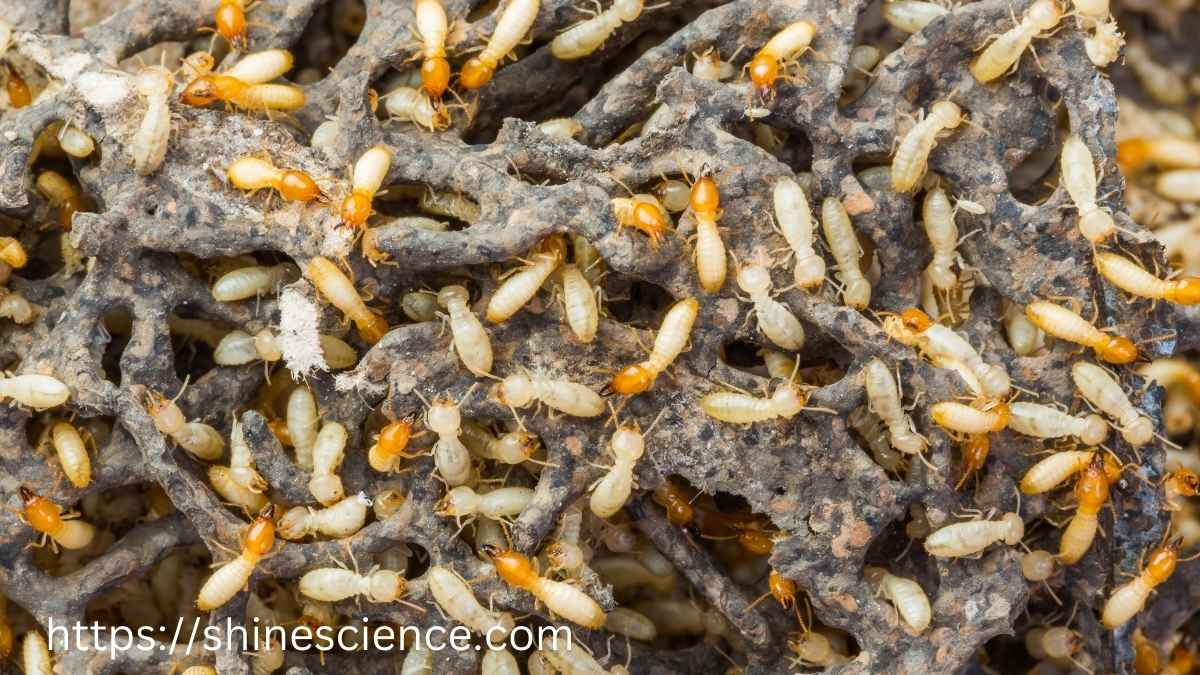
Introduction: The Silent Destroyers You Shouldn’t Ignore
Have you ever noticed small holes in wooden furniture, mud tubes near your walls, or mysterious sawdust piles? These tiny signs could be the tip of a much bigger problem — termites. These insects are often overlooked due to their size, but the truth is you should never underestimate the power of termites. They can silently destroy your property from the inside out, costing homeowners thousands of dollars in damage every year.
In fact, termites are responsible for more damage to homes each year than storms, fires, and floods combined. Still, because they work in hidden spaces, most people only discover them after serious destruction has occurred. This article will reveal the full story behind termite infestations, why they’re far more dangerous than you think, and what steps you can take to stop them before it’s too late.
What Makes Termites So Dangerous?
They Work Silently and Stealthily
Termites are often called “silent destroyers” because they chew through wood, flooring, and even wallpaper without visible signs. By the time you see them, they’ve already been busy for months — or even years. Their damage is slow but incredibly costly. That’s why understanding the threat early can save you a fortune in repairs.
Massive Colonies, Massive Problems
One termite colony can contain millions of insects. They work 24/7, never sleeping, and can eat through structural beams, furniture, and insulation. It’s a full-time demolition crew hidden behind your walls. What’s worse, some colonies can spread across yards and affect multiple buildings!
Never Underestimate the Power of Termites in Home Destruction
Real Homeowners Share Their Horror Stories
Many homeowners say the same thing after a termite invasion: “I wish I had known sooner.” There are countless real-life examples of people losing their homes, or spending $10,000 or more on repairs because termites chewed through support beams or foundational wood.
Structural Damage Can Be Irreversible
Termites can weaken the structure of your home to the point where it’s no longer safe. If they attack load-bearing walls or support beams, the building may need partial or complete reconstruction. Insurance rarely covers termite damage, so prevention is critical.
How to Identify Termite Infestations Early
Key Warning Signs to Watch For
To catch termites early, keep an eye out for:
- Mud tubes on exterior walls or in crawl spaces
- Discarded wings near windowsills (a sign of termite swarming)
- Tiny holes in wood or furniture
- Hollow-sounding wood when tapped
- Frass, which looks like fine wood-colored droppings
Spotting these signs early could save you thousands.
The Importance of Regular Inspections
Most pest control experts recommend an annual termite inspection. If you live in a high-risk area — especially warm, humid regions — consider biannual checks. Early detection is your best defense.
Why You Should Never Underestimate the Power of Termites Financially
The True Cost of Termite Damage
In the U.S. alone, termites cause over $5 billion in damage each year. That’s more than storms, earthquakes, and fires combined. The scary part? Most of this damage isn’t covered by homeowner’s insurance. This means you pay out-of-pocket.
Termites Lower Property Value
Trying to sell your home with termite damage? Expect a lower offer — or no offer at all. Homes with a termite history often scare off potential buyers, or they demand a lower price due to costly repairs and lingering damage.
Common Myths About Termites – Busted!
“Termites Only Eat Wood”
False. Termites will eat anything containing cellulose. This includes paper, cardboard, insulation, some types of fabric, and even drywall.
“If I Don’t See Them, They’re Not There”
Just because you don’t see termites doesn’t mean you’re safe. These pests live underground and inside your walls. It’s like an invisible infestation eating your home from within.
How to Protect Your Home from Termites
Proactive Prevention Strategies
Here are some smart ways to guard your home:
- Keep wood away from your foundation
- Fix leaks quickly – termites love moisture
- Seal cracks in your foundation and walls
- Keep gutters clean and ensure water drains away from the house
- Use termite-resistant materials when building or renovating
Professional Treatment Works Best
If you already have termites, call a licensed exterminator immediately. DIY methods rarely work for established infestations. Professionals use liquid barriers, termite bait stations, and fumigation to fully eliminate colonies.
The Best Termite Control Methods in 2025
Liquid Soil Treatments
Applied around your home’s foundation, these create a chemical barrier that kills termites on contact. They can protect your home for up to 10 years.
Baiting Systems
These are installed in the soil and lure termites to eat poisoned bait. They carry it back to the colony, eventually killing the queen and collapsing the colony.
Wood Treatments
Some treatments soak into wood and repel or kill termites. These are great for attic beams, crawlspaces, or wooden sheds.
Environmentally Friendly Termite Solutions
Natural Oils and Eco-Treatments
New green termite treatments use orange oil, neem oil, and borate solutions. These are safer for kids and pets, while still effectively targeting termites.
Integrated Pest Management (IPM)
IPM combines monitoring, prevention, and targeted treatments to control termites with minimal environmental impact. It’s a smarter, sustainable approach.
Termites and Real Estate: What Every Buyer & Seller Should Know
Termite Inspection Is a Must
If you’re buying or selling a home, a termite inspection is non-negotiable. It can affect mortgage approval and negotiation power.
Termite Bonds Offer Peace of Mind
These are service agreements with pest control companies. They include regular inspections and free treatments if termites are found — a huge plus when selling a home.
Conclusion: Don’t Let Small Pests Cause Big Problems
The phrase “never underestimate the power of termites” isn’t just a warning — it’s a call to action. These tiny insects may seem harmless, but their damage is serious, silent, and incredibly costly. Protecting your home means staying alert, knowing the signs, and acting fast.
Whether you’re a homeowner, property investor, or someone planning to build, termites should never be an afterthought. Early detection, preventative maintenance, and professional inspections are the keys to staying termite-free. Don’t wait until it’s too late — because when it comes to termites, what you don’t see can hurt you the most.
Final Takeaway
Termites are small — but their impact is massive. With smart prevention and fast action, you can stop them before they eat your investment from the inside out. So remember: Never underestimate the power of termites.
FAQs – Never Underestimate the Power of Termites
Q1: How fast can termites destroy a house?
A: A large colony can do serious damage within 6 months, and some homes have been structurally compromised in under 2 years.
Q2: Are termite treatments safe for kids and pets?
A: Yes, most modern treatments are formulated to be safe after they dry. Always ask your pest control expert about pet-safe options.
Q3: Can I get rid of termites myself?
A: DIY methods might help in early stages, but for full infestations, professional exterminators are the best option.
Q4: Are termites active all year round?
A: Yes. While they swarm more in spring and summer, termites eat and build colonies year-round, especially indoors.
Q5: What’s the most effective termite control method in 2025?
A: Integrated Pest Management (IPM) and baiting systems are currently the most effective, sustainable, and long-term solutions.



